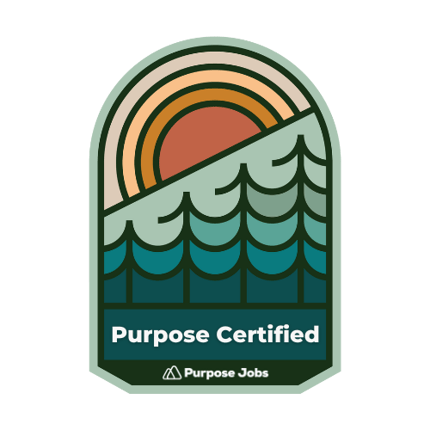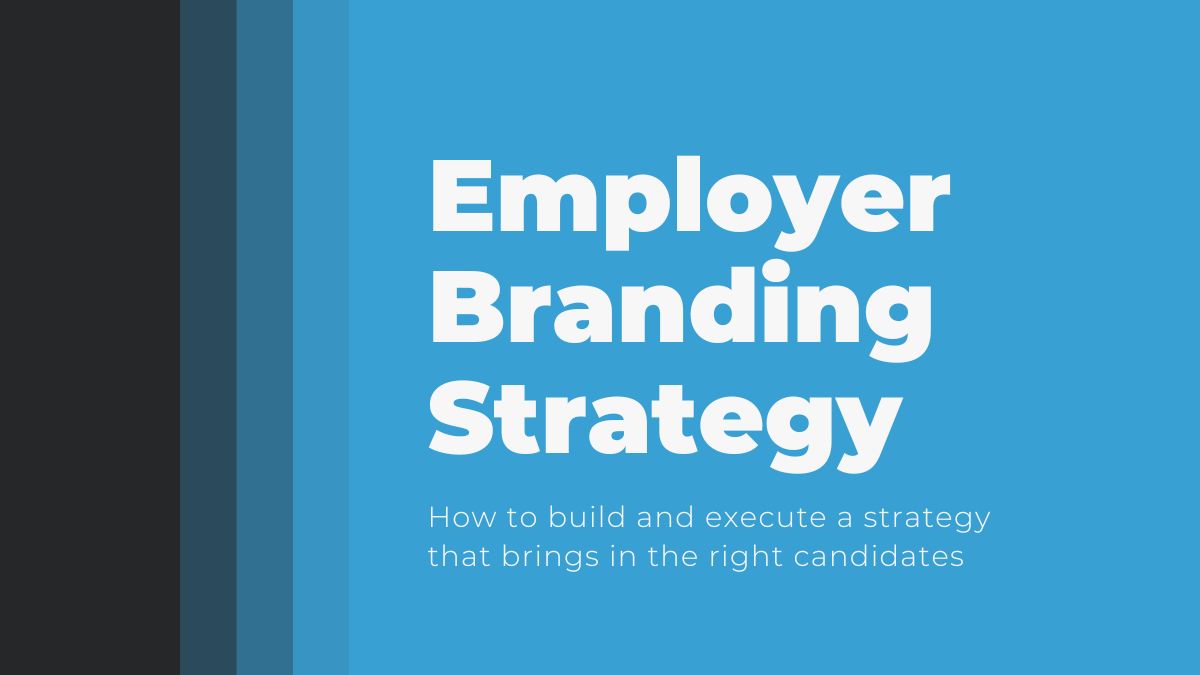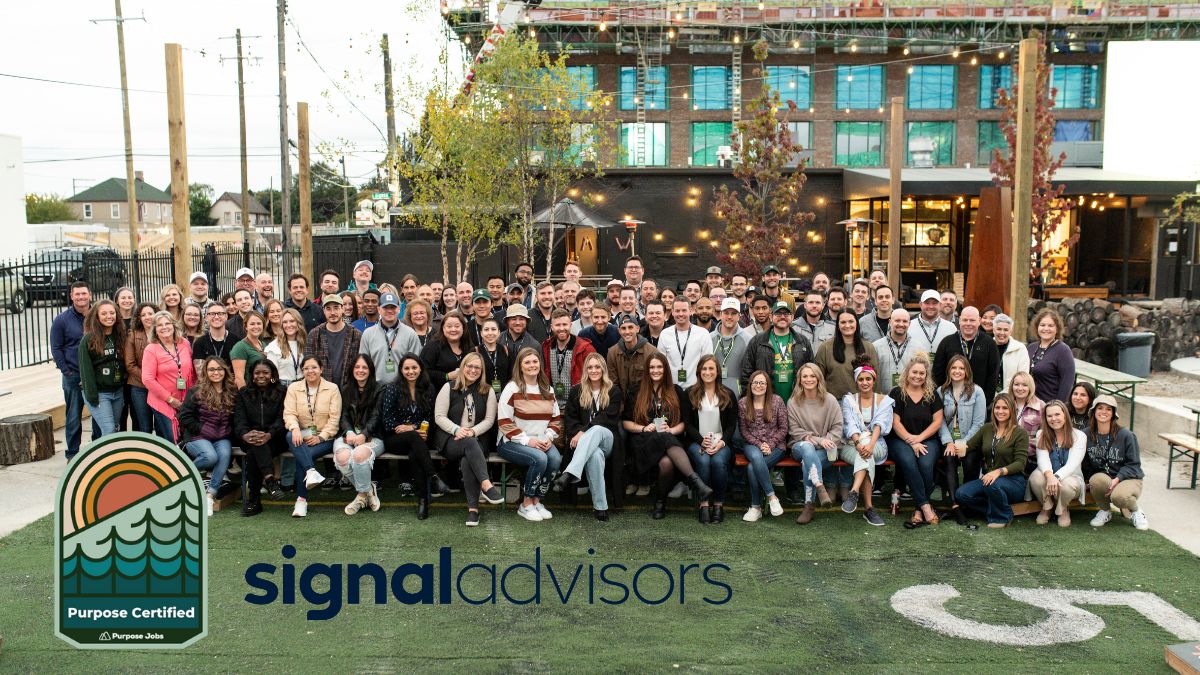Employer Branding: The Complete Guide to Attracting Top Talent


.jpg?width=430&name=Veeva%20Docuseries%20Cover%20Image%20(1).jpg)

What is employer branding?
Before we get started on the how, let’s get into the what: exactly what is employer branding? Just as you would market your company’s products and services, you also should market the company as a workplace.
Branding is about how you make people feel: so, how do people feel about working at your company?
Are they excited about the opportunity? Have they heard bad things about the management and are wary of joining? Does the company’s values align with theirs, making them feel inspired and motivated?
Those emotional responses are exactly what branding is about.
Employer branding definition
You can google this but here’s what our team likes to say: employer branding is marketing your company as a great place to work. Or, employer branding is the act of communicating what it’s like to work at your company in order to attract and retain talent.
It may sound simple, but crafting — and distributing — an employer brand isn’t always easy.
There are lots of steps you can take to create the kind of employer brand you want to put out there. But you have to make sure people are seeing it.
Employer branding and recruitment
While the two are very connected, they of course are different and serve different purposes. Again, if we’re applying the principles of marketing to recruitment, you can think of it like a funnel. Top of funnel (the awareness phase) is all about branding. As candidates move down the funnel (from awareness to consideration to converting), they start to enter the recruitment realm.
Employer branding is about awareness and promoting your company’s reputation. Recruiting is the process of looking for, interviewing and hiring candidates.
Employer branding and recruiting go hand in hand, and employer branding is an imperative part of modern recruiting. A recruiting strategy without employer branding will fall flat. And an employer branding strategy that doesn’t actively bring candidates is pretty much meaningless.
.jpg)
The importance of employer branding
No matter what stage your company is in, employer branding is key. What’s the importance of employer branding? Well, your company is only as good as your talent. And like I said before, your talent is only as good as your employer branding.
Times have changed. Top job seekers are no longer sticking out toxic work environments, micromanagers, or low pay. They are looking for a fantastic work experience. Of course no job is roses and sunshine all the time, but the goal is to find a company that actively tries to make it a great place to work.
That’s why 75% of job seekers consider a company’s employer brand before deciding to apply to a job. (LinkedIn Talent Report)
Reputation (which you could also think of as your employer brand) really matters: 2023 Glassdoor research finds that 50% of candidates won’t work for a company with a bad reputation, and 92% of the current workforce says they’d change jobs to go to a company with an “excellent” reputation.
Think your brand is well established? It’s still important to maintain it. 9 out of 10 candidates would apply for a job when it’s from an employer brand that’s actively maintained. (Workable)
Not only is it good for talent attraction, but it’s also good for retention. Employee turnover can be reduced by 28% by investing in employer brand. (Office Vibe)
Whether you’re just starting out and looking for your first 10 hires, or you’re looking for your 10,000th hire, crafting and maintaining a strong employer brand is imperative for hiring the right talent.
So here’s how to do it…
Employer value proposition
It's not enough to simply offer a paycheck and a few benefits and say “we’re a great place to work” to attract and retain top talent. Organizations need to craft an effective employer value proposition (EVP) that communicates their unique value and benefits to potential and current employees.
An effective EVP can help differentiate your organization from competitors, increase employee engagement and satisfaction, and ultimately, drive business success. But developing an EVP is not always easy. Here are the steps you need to take:
-
Before you start, make sure you understand what an EVP is and how it’s different from employer branding.
-
Conduct research
-
Define your unique selling proposition
-
Craft a story
-
Track your success

Employer branding strategy
There’s a lot of ways to go about building and executing an effective employer branding strategy. It can feel daunting if you’re not sure where to start, so here’s how to break it down.
Phase 1: Getting Started and Pre-Planning
Before you get started, it’s important to start with some basics. Getting leadership bought into the importance of employer branding will be the first thing to do. Share these reasons why employer branding is important and the data supporting it. You can’t do much until your leadership is on board with this focus and investment (time and/or money-wise). Then you’ll want to decide who will own what tasks.
You’ll also want to understand your employer branding needs — is your brand just emerging, or is it already established? Knowing that will determine the best path forward. If you’re just emerging, take some time do research:
-
What sets you apart from competitors? In other words, what is your employer value prop?
-
Who is your ideal candidate?
-
Where can you reach them?
Phase 2: Creating Content
Now that you have a better understanding of what you’re doing, you can start creating content! Employer branding is all about sharing an authentic story to get candidates imagining themselves happy at your company.
Check out some examples of employer branding content if you’re stuck on ideas.
Phase 3: Getting Your Brand Out There
Distribute, distribute, distribute! Now that you have the content, get some eyeballs on it! Share it on social media and make sure your employees engage with the content and post on their own channels. They’re your best advocates.
Executing your employer branding strategy
Now that you’ve got your employer branding strategy built out, it’s important to make sure your team is on the same page about execution. Who will be doing what? Well, you have some options!
Hire an employer branding specialist.
If you’re at a stage in your company where you can invest in a dedicated employer branding specialist, do it! Often this person is a part of the HR/people opps team, but sometimes they do end up sitting with marketing. Sometimes they’re even called, “Talent Marketing Specialist'' or “Head of Talent Attraction.”
Collaborate with your marketing team
Can’t hire a dedicated person? Collaborate with your marketing team. Make sure they understand that this is a priority for leadership, and work together on creating some powerful stories for your brand.
-
Can the social team help with LinkedIn?
-
Can the content team write some catchy lines?
-
Can the video team work on employee testimonial videos?
We’ll get more into employer examples soon, but these are just a few ideas.
Hire a team of experts
If you need help with the whole process (and that’s okay if you do — employer branding is a big undertaking!) it might be a good idea to bring in a team of experts. You could start small with one part-time, freelance person, or you could bring in a whole team. It just depends on what your team needs.
If you’re looking at bringing on a team, make sure they’d be filling a gap you have in your process. Are they helping with strategy? Audience building? Content creation? For example, at Purpose Jobs, we help companies by creating content (doing the heavy lifting for the teams that don’t have enough time) and by distributing that content to an already established and engaged audience. We’re a good fit for those teams that need help getting their brand in front of more people and creating the content for them (though we do sometimes help with strategy, too!).
Whatever you choose, just make sure it’s filling a gap you have.
Employer branding examples
Okay, so you know who’s owning employer branding. You have a high level strategy of what, when and how to do this. Now it’s time to actually do the employer branding. So what kind of things work well for employer branding?
Here are some excellent examples:
-
Behind-the-scenes blog posts
-
Employee testimonials
-
Day in the life video/social/blog post
-
Show off your benefits
-
Video series
-
Video job descriptions
If you’re looking for more, check out these examples of employer branding that you can start working on today.


employer branding examples - spotlight article
Employer branding measurement
So you’ve built out your strategy. You’ve created content and campaigns. You’re distributing it across channels… now what?
Now it’s time to measure the success of your employer branding strategy.
But what exactly should you be tracking?
First, it’s important to go back to your employer branding goals. Are you trying to increase awareness? Are you trying to get more candidates engaged? Interview less but higher quality candidates? Reduce your hiring time?
Chances are you might be trying to track all of these things. And that’s okay, but you’ll want to set and track goals accordingly.
For increased awareness, you’ll want to track top of funnel metrics:
-
Page views
-
Video views
-
Social media impressions
-
Company reviews
For hiring goals, you’ll want to track more middle and bottom of funnel metrics:
-
Application numbers
-
Candidate engagement
-
Speed of hiring
-
Cost of hiring
-
Tenure and turnover
Of course there are always so many things you can track, but the important thing is that you understand your goals, you’ve set benchmarks, and tracking metrics that are tightly aligned to your employer branding goals.
Employer branding is never easy. It takes a lot of time and effort, but it’s always worth the investment.
Book A Strategy Call
Need a hand in getting your employer branding strategy up and running? The Purpose Jobs team would love to help. Schedule a strategy call to get started.

